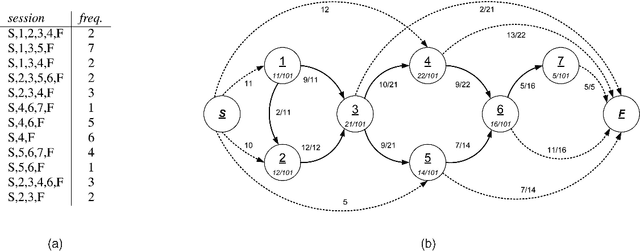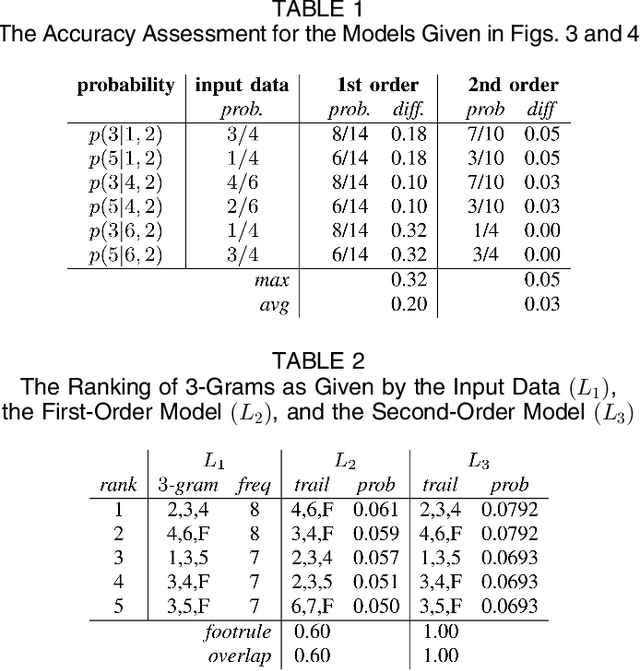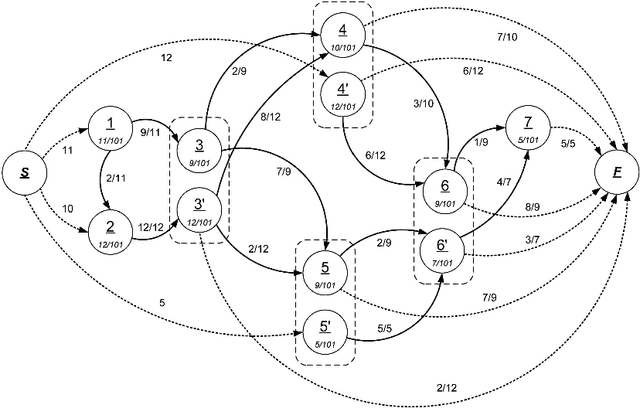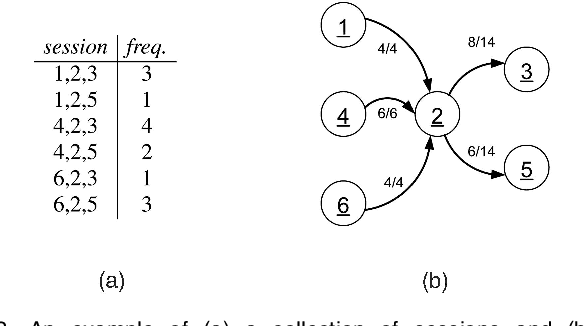Jose Borges
Evaluating Variable Length Markov Chain Models for Analysis of User Web Navigation Sessions
Jun 28, 2006



Abstract:Markov models have been widely used to represent and analyse user web navigation data. In previous work we have proposed a method to dynamically extend the order of a Markov chain model and a complimentary method for assessing the predictive power of such a variable length Markov chain. Herein, we review these two methods and propose a novel method for measuring the ability of a variable length Markov model to summarise user web navigation sessions up to a given length. While the summarisation ability of a model is important to enable the identification of user navigation patterns, the ability to make predictions is important in order to foresee the next link choice of a user after following a given trail so as, for example, to personalise a web site. We present an extensive experimental evaluation providing strong evidence that prediction accuracy increases linearly with summarisation ability.
Ranking Pages by Topology and Popularity within Web Sites
Dec 09, 2004



Abstract:We compare two link analysis ranking methods of web pages in a site. The first, called Site Rank, is an adaptation of PageRank to the granularity of a web site and the second, called Popularity Rank, is based on the frequencies of user clicks on the outlinks in a page that are captured by navigation sessions of users through the web site. We ran experiments on artificially created web sites of different sizes and on two real data sets, employing the relative entropy to compare the distributions of the two ranking methods. For the real data sets we also employ a nonparametric measure, called Spearman's footrule, which we use to compare the top-ten web pages ranked by the two methods. Our main result is that the distributions of the Popularity Rank and Site Rank are surprisingly close to each other, implying that the topology of a web site is very instrumental in guiding users through the site. Thus, in practice, the Site Rank provides a reasonable first order approximation of the aggregate behaviour of users within a web site given by the Popularity Rank.
 Add to Chrome
Add to Chrome Add to Firefox
Add to Firefox Add to Edge
Add to Edge